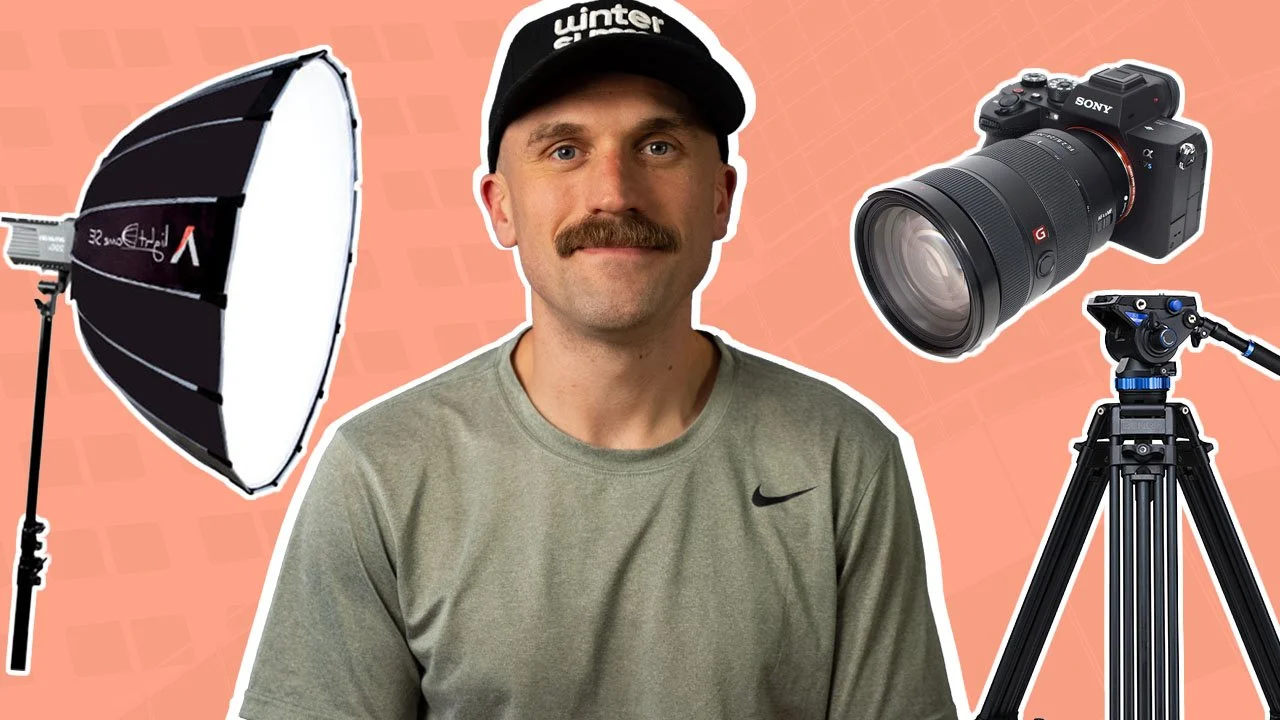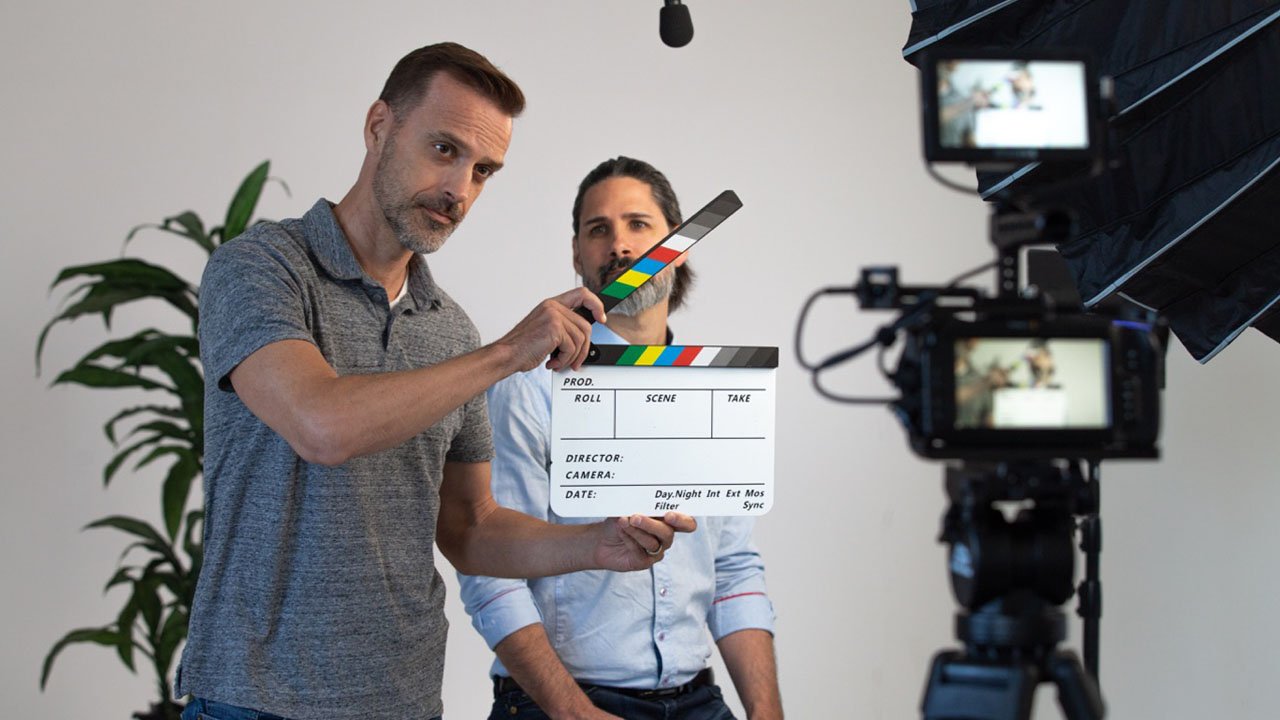How Our Video Production Company Makes People Feel Comfortable on Camera
Just the other day we had a COO of a 200-person company on our interview seat. Right when he sat down in front of the lights, he said, “dam my heart is pounding. Is that normal? I usually address my whole company and it’s easy. Why is this so hard?”
In this post, we’re going to dive into some of the reasons why on-camera nervousness happens and what we do as a video production company to ease the stress and make it a more enjoyable experience.
Where does the fear come from?
The fear of being on camera comes from many different angles. Seeing the professional camera equipment, not being confident in the subject matter and just a fear of the unknown.
Imagine, your boss tells you we need you to be on camera in a few weeks, and you agree because you’re a team player. When the day comes, you realize that no one has sent you the questions that are going to be asked during the interview. You shake hands with someone from the video team and sit down in front of multiple cameras, big lights, and a microphone above your head. Meanwhile, half of your office is standing behind the cameras, waiting to hear what you have to say. Suddenly, the camera guy says he’s recording, and someone starts asking questions that you don’t feel prepared to answer.
This is a very common scenario that makes the person on camera very uncomfortable and produces a subpar final video.
Techniques we use to help cool the nerves
I’ve personally filmed hundreds of CEOs of major corporations, some of them worth billions of dollars, and one thing I’ve noticed is that they all get nervous, they get uncomfortable, and they’re just people like you and me. No matter who you are, unless you are an actor with years of experience in front of the lens, talking to the camera will not be natural and will most likely be a challenging experience.
Let's have a look at some techniques that help even the most timid person seem confident and at ease in front of the camera.
Get to know each other
Before filming, we like to get to know the person who will be on camera. Having a short small talk session in an area without any equipment will make the person feel more comfortable with the video crew prior to getting started. We talk about our kids, crack a few jokes, humanize ourselves, and show that we are all on the same team and just here to help.
Explain how everything works
Fearing the unknown is a real thing. Prior to filming, we like to explain how everything will work with the recording and break down a little of the video editing process. Making them aware of the fact that the interview may be long but the final video may only be two minutes. We’re really just looking for a few golden nuggets so perfection or one long take is not what we need.
Encouragement
One of my favourite ways to encourage the person on camera is a nod of the head after they deliver a take. It can be challenging to know whether things are going well from the other side of the camera so encouragement is super important.
The same COO from the intro of this post said to me afterwards, “I was watching you after I answered each question for the head nod to give me confirmation that I delivered a good answer” It gave him confidence and helped him continue.
VIPs only
I filmed a corporate-style interview where 6 or 7 people were watching, listening, and giving critiques on every answer the interview subject was giving. At one point, she understandably became fed up and said, “Okay! Everyone has to leave the room. This is too much!“ It can be beneficial to have one trusted advisor or public relations person in the room to bounce ideas off but the more people in the room equals more pressure so it’s best to clear out the room as best we can before filming.
Book extra time
A couple of years back, I was wearing my Apple watch while filming and I got an email so I took a quick peek at who it was. The person in front of the camera said emphatically, “You’re looking at your watch! Ahhh”. She thought I was checking the time which made her think she was taking too long which added to all the pressure.
Since that day I have been very conscious of things that make the person feel like there is a rush. We always book extra time so no matter what happens we always have enough time to comfortably complete the video.
Asking good questions
If you’re doing an interview, it’s really important to have simple, straightforward questions. I find that the person who comes up with the questions is often not a copywriting expert and doesn’t think about how the person on camera will interpret the questions on the spot. I prefer to review the questions and make recommendations on how to structure and simplify them, especially when the interview subject will not be seeing the questions or material beforehand.
Laidback atmosphere
My favourite line when someone sits down in front of the camera is, “You do this often?”. This is often followed by a laugh and a no. The idea is not to be too rigid and procedural during the shoot. Instead of saying something like, “Okay quiet on set, cameras rolling, take 1” which can add pressure, I will subtly press record and calmly say that we’re ready to get started. Making sure the person is comfortable is our top priority, so creating a relaxed and welcoming atmosphere can help them feel at ease during the recording.
Minimize equipment
We try to keep our equipment and crew to the lightest we can without sacrificing quality. The more equipment a person sees, the more intimidating it can feel, so by limiting our setup can help lower the pressure and keep them in a comfortable state of mind.
Choosing the right people to be on camera
No matter what we do, some people are simply not suited for being on camera. This may be due to a lack of knowledge of the subject being discussed or simply poor communication skills. What I’ve found is that when someone is passionate about their work, they can talk about it for hours so finding the right person to be on camera will be super important.
Pre-interview
Jumping on a Zoom call and running through the questions or material can be extremely beneficial for a video shoot. If it’s an interview, the person can answer the questions in a comfortable environment and the interviewer can take notes of the answers. This also allows the on-camera person to get comfortable with the interview process and the interviewer, making the day of the shoot less of a surprise for them.
Questions in advance
In most cases, it’s best to provide the questions or subject matter in advance. This will give them a headstart. This can be extremely useful for situations where they are not super confident in what they will be saying.
Line-by-line
It is common for videos to include additional footage (known as B-roll) that is layered over the parts where people are talking. If someone is struggling to remember a lengthy sentence or paragraph, it can be broken down into smaller parts and the cuts can be hidden in the video editor with the B-roll that was filmed.
Teleprompter
A teleprompter is a device that sits directly in front of the lens of the camera, showing any text or scripts that you’d like to display. It gives the viewer the impression that the speaker is looking at the camera, but in reality, they are reading a script. This can be great for people who are struggling with a long scripted message.
About Winter Summer Media
Winter Summer Media is a Montreal-based video production company that provides custom video content to businesses across Canada. We help companies tell their story with custom video content that showcases their unique value, builds trust and makes it easier to close deals. If you’d like to discuss a video project or have any questions, don’t hesitate to reach out.



